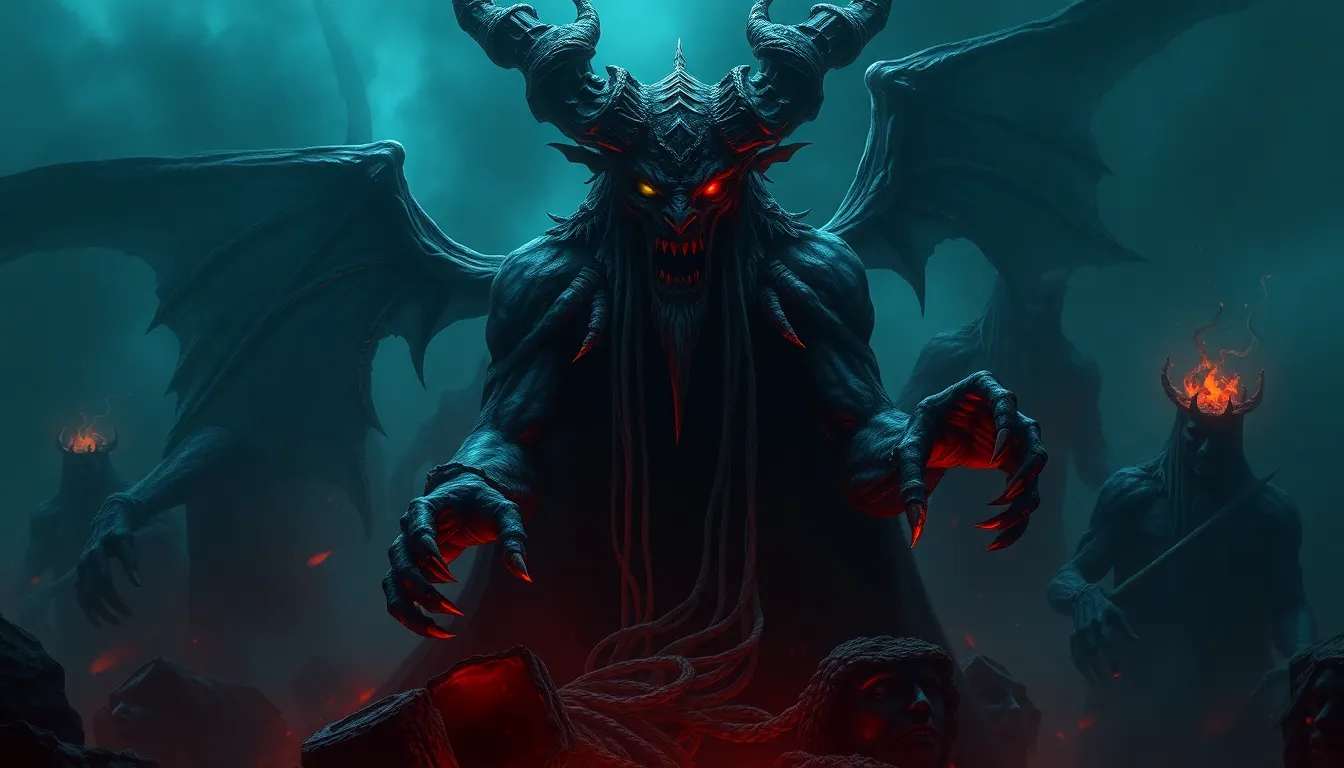The Mythical Underworld: A Journey Through Time and Space
I. Introduction
The concept of the underworld has captivated human imagination across cultures and epochs. It is often depicted as a realm beneath the earth, where souls go after death, laden with both fear and intrigue. The mythical underworld serves as a canvas for societies to explore themes of mortality, morality, and the afterlife.
This article aims to delve into the multifaceted nature of the mythical underworld, examining its significance in various cultures, its historical evolution, and its representation in literature and art. By understanding the underworld, we gain insights into the values and beliefs that have shaped human civilization.
The underworld holds immense importance in various cultural narratives, serving as a mirror to societal values and the human condition. It often reflects the fears and hopes of humanity concerning death and what lies beyond.
II. Historical Context of the Underworld
Throughout history, the underworld has been a fundamental aspect of belief systems across ancient civilizations. Its representation has varied widely, influenced by cultural, geographical, and historical contexts.
- Overview of ancient civilizations and their beliefs: From the Mesopotamians to the Greeks and Egyptians, the underworld was a central theme in understanding life after death.
- The role of the underworld in mythology and religion: Many religions incorporated the underworld into their cosmologies, shaping their rituals and moral codes.
- Evolution of underworld concepts through different eras: As societies evolved, so too did their interpretations of the underworld, reflecting changes in their beliefs and practices.
III. Major Mythological Underworlds
Different cultures have created unique visions of the underworld, each echoing their values and beliefs. Here are some major mythological underworlds:
A. The Greek Underworld: Hades and its significance
The Greek underworld, known as Hades, was ruled by the god of the same name. It was divided into several regions, including:
- Elysium: A paradise for the virtuous.
- Tartarus: A deep abyss used as a dungeon of torment.
- Asphodel Meadows: A neutral zone for ordinary souls.
Hades embodied the Greek understanding of death, emphasizing fate and the inevitability of mortality.
B. The Roman Underworld: Dis Pater and the afterlife
In Roman mythology, the underworld was ruled by Dis Pater, the god of the dead. The Romans adopted many Greek beliefs but added their own nuances. The concept of the afterlife included a focus on ancestor worship and the importance of burial rites to ensure a smooth passage to the afterlife.
C. The Egyptian Duat: Journey through the afterlife
The Duat, or Egyptian underworld, was a complex realm filled with trials. The dead were judged by Osiris, and their hearts were weighed against the feather of Ma’at, representing truth and justice. Successful souls entered the Field of Reeds, a paradise, while those who failed faced eternal punishment.
D. The Norse Hel: A realm of the dead
In Norse mythology, Hel is both the name of the goddess and the realm of the dead. Those who did not die a heroic death went to Hel, where they experienced a cold and bleak existence, highlighting the Norse values of bravery and honor.
IV. Underworlds in Global Mythologies
Beyond the well-known mythologies of the West, numerous other cultures have rich traditions surrounding the underworld:
A. The Aztec Mictlan: The path of the dead
The Aztec underworld, Mictlan, was a complex journey through various levels, each presenting challenges and obstacles. Souls traversed this realm guided by the god Mictlantecuhtli.
B. The Hindu Naraka: Concepts of karma and rebirth
In Hindu belief, Naraka is a temporary realm for souls who have sinned, where they undergo punishment before being reborn based on their karma.
C. The Chinese Diyu: The realm of the deceased
Diyu, the Chinese underworld, features a series of courts where the deceased are judged. This realm emphasizes the importance of filial piety and the consequences of one’s actions in life.
D. Indigenous beliefs: Varieties of underworld traditions
Indigenous cultures worldwide often have unique perspectives on the underworld that reflect their connection to nature and spirituality. Varied beliefs include:
- Dreamtime in Australian Aboriginal cultures, where ancestors reside.
- The Inuit’s belief in an afterlife characterized by a journey across a frozen landscape.
V. Symbolism and Archetypes of the Underworld
The underworld serves as a rich source of symbolism and archetypes, contributing to its powerful narrative across cultures.
A. The underworld as a symbol of death and rebirth
In many cultures, the underworld symbolizes both an end and a new beginning, representing the cyclical nature of life.
B. Common archetypes: The guide, the judge, and the wanderer
Key figures often appear in underworld narratives, including:
- The Guide: Figures like Charon or Anubis who help souls navigate the afterlife.
- The Judge: Deities who assess one’s life and determine their fate.
- The Wanderer: Heroes who journey through the underworld, seeking knowledge or redemption.
C. The psychological interpretation of the underworld
Psychologically, the underworld can represent the unconscious mind, a place where repressed feelings and fears reside, highlighting the need for self-discovery and healing.
VI. The Underworld in Literature and Art
The underworld has inspired countless works of literature and art throughout history.
A. Depictions of the underworld in classical literature
From Homer’s “Odyssey” to Dante’s “Inferno,” classical literature often explores the theme of the underworld as a place of judgment and transformation.
B. Artistic representations: From paintings to sculptures
Artists like Hieronymus Bosch and Gustave Doré have depicted the underworld and its torments, bringing visual life to these mythic realms.
C. Modern interpretations in literature and film
Contemporary works often reinterpret these ancient themes, as seen in films like “What Dreams May Come” or books like Neil Gaiman’s “American Gods,” reflecting modern anxieties and beliefs about death and the afterlife.
VII. The Underworld and its Cultural Significance
The underworld’s influence extends beyond mythology into various aspects of culture and society.
A. Influence on moral and ethical teachings
Many cultures use the concept of the underworld to impart moral lessons, warning against immoral behavior by illustrating the consequences faced in the afterlife.
B. Underworld mythology in rituals and ceremonies
Rituals surrounding death often incorporate elements of the underworld, guiding the deceased and honoring ancestral spirits.
C. The underworld’s role in shaping cultural identity
Beliefs about the underworld contribute to cultural identity, influencing art, literature, and social norms, reflecting the collective psyche of a society.
VIII. The Science of the Underworld: Myths vs. Reality
While the underworld is a mythical construct, its exploration has intersected with scientific inquiry.
A. Archaeological findings and their implications
Excavations of ancient burial sites offer insights into cultural beliefs about the afterlife, revealing practices that align with mythological narratives.
B. The intersection of mythology and psychology
Psychological approaches may explain the underworld as a manifestation of our fears and aspirations regarding death.
C. Modern interpretations of the underworld in science
Contemporary discussions about consciousness and the afterlife reflect the enduring relevance of the underworld concept in understanding human existence.
IX. Contemporary Views and Adaptations
In recent years, there has been a resurgence of interest in underworld myths.
A. The revival of interest in underworld myths
Modern spirituality and new-age philosophies often draw upon ancient underworld narratives, integrating them into contemporary belief systems.
B. Influence of technology and digital media
<p



